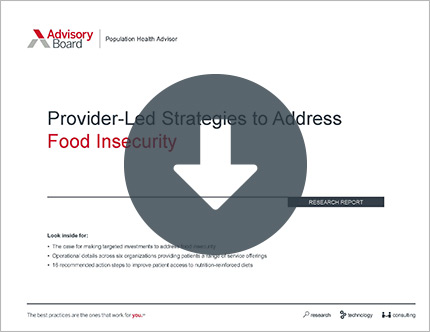Auto logout in seconds.
Continue LogoutCDC recently published data showing how overweight, obesity, and severe obesity rates have changed in America over time and, overall, the data shows that the percentage of obese adults and children in the United States has grown in recent years.
10 tools for prioritizing community health interventions
How obesity is changing among US children and adults
The data is based on responses to the 2017-2018 National Health and Nutrition Examination Survey, as well as historical findings on overweight, obesity, and severe obesity rates in the United States. CDC released two separate reports detailing those changes, with one report focused on U.S. adults ages 20 and older and another report focused on U.S. children ages 2 to 19.
According to CDC, the percentages of overweight, obese, and severely obese children ages 2 through 19 in the United States have generally trended upwards in recent years. For instance, the data shows that the percentage of obese children ages 2 through 19 in the United States increased from 5.2% in 1971-1974 to 19.3% in 2017-2018.
CDC similarly found that the percentages of obese and severely obese adults ages 20 and older in the United States have generally increased in recent years—and that the percentage of obese adults has particularly spiked, growing from 22.9% in 1988-1994 to 42.4% in 2017-2018. However, the percentage of overweight U.S. adults has remained mostly stable, decreasing slightly from 33.1% in 1988-1994 to 30.7% in 2017-2018.
Overweight and obesity rates generally have grown among both boys and girls ages 2 to 19, although rates of obesity and severe obesity are lower among girls than boys, the data shows. Specifically, the data shows that the rate of obesity increased from 5.3% in 1971-1974 to 20.5% in 2017-2018 among boys, and from 5.1% in 1971-1974 to 18% in 2017-2018 among girls.
Similarly, rates of obesity among both U.S. men and women ages 20 and older have increased over the years, with the obesity rate slightly lower among women. According to the data, the rate of obesity increased from 20.2% in 1988-1994 to 43.5% in 2017-2018 among men, and from 25.4% in 1988-2018 to 42.1% in 2017-2018 among women.
However, there are greater disparities between the rates of overweight and severe obesity among men and women, with women tending to have lower rates of being overweight than men, but seeing higher rates of severe obesity.
The data also shows racial disparities in overweight, obesity, and severe obesity rates. For instance, CDC found that non-Hispanic white boys ages 2 to 19 had lower obesity rates when compared with non-Hispanic boys and Hispanic boys in 2017-2018. Similarly, CDC found that non-Hispanic white men had lower obesity rates than Hispanic men in 2017-2018.
(Fryar et al., "Prevalence of Overweight, Obesity, and Severe Obesity Among Adults Aged 20 and Over: United States, 1960–1962 Through 2017–2018," CDC's National Center for Health Statistics, December 2020; Fryar et al., Prevalence of Overweight, Obesity, and Severe Obesity Among Children and Adolescents Aged 2–19 Years: United States, 1963–1965 Through 2017–2018; CDC's National Center for Health Statistics, December 2020; Monaco, MedPage Today, 12/11).

Explore best practice models for implementing programs to address food insecurity, learn from seven provider organizations that represent a broad range of food insecurity interventions, and get action steps for improving patient access to nutrition-reinforced diets.
Don't miss out on the latest Advisory Board insights
Create your free account to access 1 resource, including the latest research and webinars.
Want access without creating an account?
You have 1 free members-only resource remaining this month.
1 free members-only resources remaining
1 free members-only resources remaining
You've reached your limit of free insights
Become a member to access all of Advisory Board's resources, events, and experts
Never miss out on the latest innovative health care content tailored to you.
Benefits include:
You've reached your limit of free insights
Become a member to access all of Advisory Board's resources, events, and experts
Never miss out on the latest innovative health care content tailored to you.
Benefits include:
This content is available through your Curated Research partnership with Advisory Board. Click on ‘view this resource’ to read the full piece
Email ask@advisory.com to learn more
Click on ‘Become a Member’ to learn about the benefits of a Full-Access partnership with Advisory Board
Never miss out on the latest innovative health care content tailored to you.
Benefits Include:
This is for members only. Learn more.
Click on ‘Become a Member’ to learn about the benefits of a Full-Access partnership with Advisory Board
Never miss out on the latest innovative health care content tailored to you.
